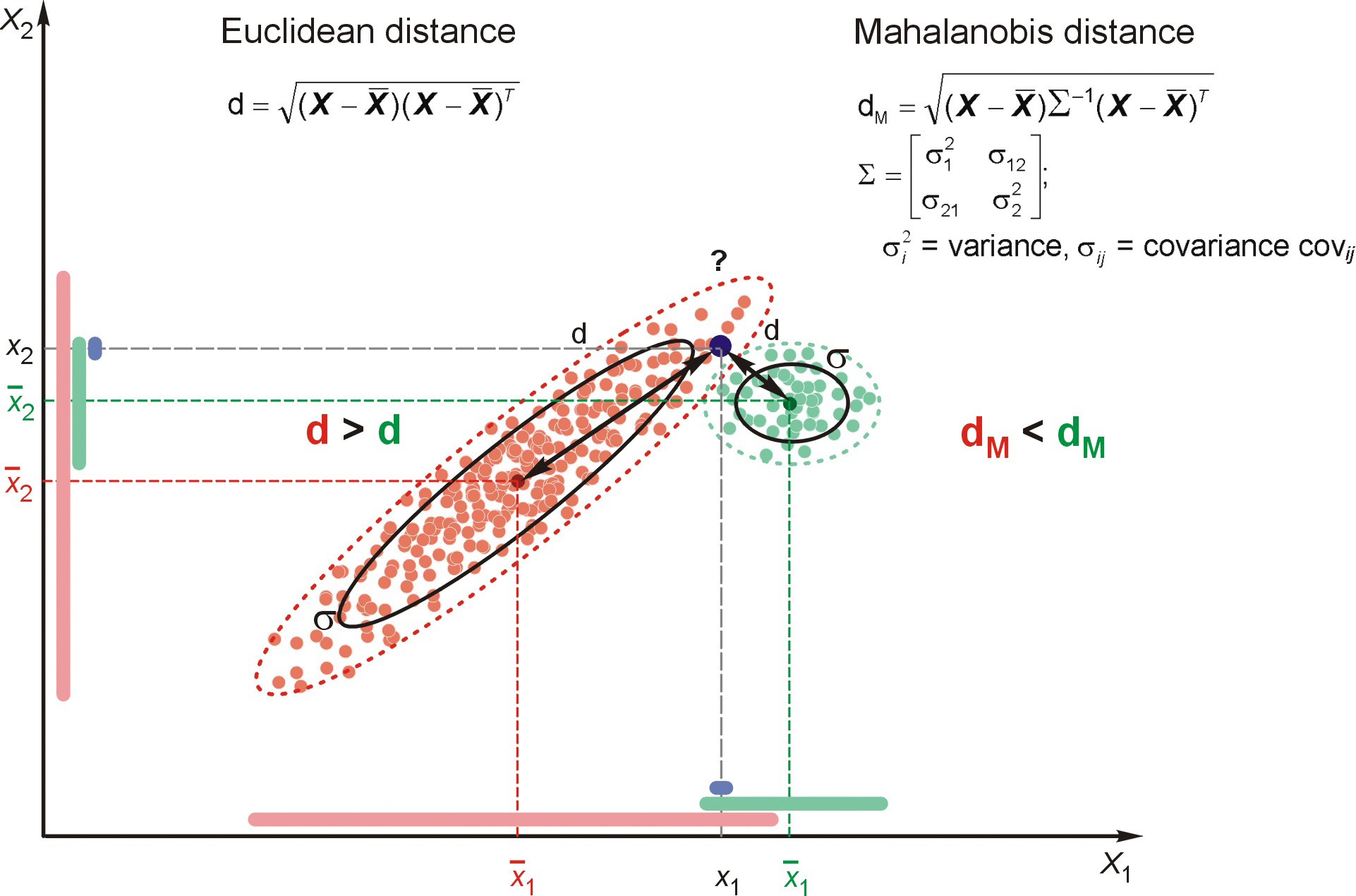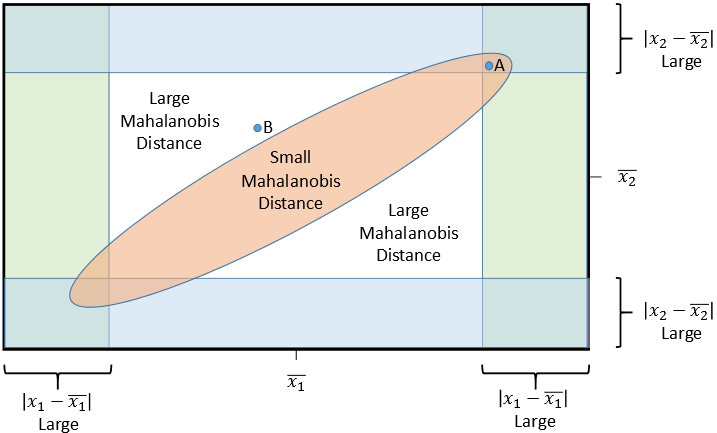- A dependence technique may be defined as one in which a variable or set of variables is identified as the dependent variable to be predicted or explained by other variables known as independent variables. An example of a dependence technique is multiple regression analysis.
Một số kỹ thuật của "dependence technique"
(Nguồn: Hair, J. F. (2009). Multivariate data analysis. )
- In contrast, an interdependence technique is one in which no single variable or group of variables is defined as being independent or dependent. Rather, the procedure involves the simultaneous analysis of all variables in the set. Factor analysis is an example of an interdependence technique.
TYPES OF MULTIVARIATE TECHNIQUES
- Principal components and common factor analysis
- Multiple regression and multiple correlation
- Multiple discriminant analysis and logistic regression
- Canonical correlation analysis
- Multivariate analysis of variance and covariance
- Conjoint analysis
- Cluster analysis
- Perceptual mapping, also known as multidimensional scaling
- Correspondence analysis
- Structural equation modeling and confirmatory factor analysis
Principal Components and Common Factor Analysis
Factor analysis, including both principal component analysis and common factor analysis, is a statistical approach that can be used to analyze interrelationships among a large number of variables and to explain these variables in terms of their common underlying dimensions (factors). The objective is to find a way of condensing the information contained in a number of original variables into a smaller set of variates (factors) with a minimal loss of information. By providing an empirical estimate of the structure of the variables considered, factor analysis becomes an objective basis for creating summated scales.
Multiple regression is the appropriate method of analysis when the research problem involves a single metric dependent variable presumed to be related to two or more metric independent variables. The objective of multiple regression analysis is to predict the changes in the dependent variable in response to changes in the independent variables. This objective is most often achieved through the statistical rule of least squares.
Multiple Discriminant Analysis and Logistic Regression
Multiple discriminant analysis (MDA) is the appropriate multivariate technique if the single dependent variable is dichotomous (e.g., male–female) or multi-chotomous (e.g., high–medium–low) and therefore nonmetric. As with multiple regression, the independent variables are assumed to be metric. Discriminant analysis is applicable in situations in which the total sample can be divided into groups based on a nonmetric dependent variable characterizing several known classes. The primary objectives of multiple discriminant analysis are to understand group differences and to predict the likelihood that an entity (individual or object) will belong to a particular class or group based on several metric independent variables
Logistic regression models, often referred to as logit analysis, are a combination of multiple regression and multiple discriminant analysis. This technique is similar to multiple regression analysis in that one or more independent variables are used to predict a single dependent variable. What distinguishes a logistic regression model from multiple regression is that the dependent variable is nonmetric, as in discriminant analysis. The nonmetric scale of the dependent variable requires differences in the estimation method and assumptions about the type of underlying distribution, yet in most other facets it is quite similar to multiple regression. Thus, once the dependent variable is correctly specified and the appropriate estimation technique is employed, the basic factors considered in multiple regression are used here as well. Logistic regression models are distinguished from discriminant analysis primarily in that they accommodate all types of independent variables (metric and nonmetric) and do not require the assumption of multivariate normality. However, in many instances, particularly with more than two levels of the dependent variable, discriminant analysis is the more appropriate technique.
Canonical Correlation
Canonical correlation analysis can be viewed as a logical extension of multiple regression analysis. With canonical analysis the objective is to correlate simultaneously several metric dependent variables and several metric independent variables. Whereas multiple regression involves a single dependent variable, canonical correlation involves multiple dependent variables. The underlying principle is to develop a linear combination of each set of variables (both independent and dependent) in a manner that maximizes the correlation between the two sets. Stated in a different manner, the procedure involves obtaining a set of weights for the dependent and independent variables that provides the maximum simple correlation between the set of dependent variables and the set of independent variables.
Multivariate Analysis of Variance and Covariance
Multivariate analysis of variance (MANOVA) is a statistical technique that can be used to simultaneously explore the relationship between several categorical independent variables (usually referred to as treatments) and two or more metric dependent variables. As such, it represents an extension of univariate analysis of variance (ANOVA). Multivariate analysis of covariance (MANCOVA) can be used in conjunction with MANOVA to remove (after the experiment) the effect of any uncontrolled metric independent variables (known as covariates) on the dependent variables. The procedure is similar to that involved in bivariate partial correlation, in which the effect of a third variable is removed from the correlation. MANOVA is useful when the researcher designs an experimental situation (manipulation of several nonmetric treatment variables) to test hypotheses concerning the variance in group responses on two or more metric dependent variables.
Conjoint Analysis
Conjoint analysis is an emerging dependence technique that brings new sophistication to the evaluation of objects, such as new products, services, or ideas. The most direct application is in new product or service development, allowing for the evaluation of complex products while maintaining a realistic decision context for the respondent. The market researcher is able to assess the importance of attributes as well as the levels of each attribute while consumers evaluate only a few product profiles, which are combinations of product levels.
Assume a product concept has three attributes (price, quality, and color), each at three possible levels (e.g., red, yellow, and blue). Instead of having to evaluate all 27 (3 * 3 * 3) possible combinations, a subset (9 or more) can be evaluated for their attractiveness to consumers, and the researcher knows not only how important each attribute is but also the importance of each level (e.g., the attractiveness of red versus yellow versus blue). Moreover, when the consumer evaluations are completed, the results of conjoint analysis can also be used in product design simulators, which show customer acceptance for any number of product formulations and aid in the design of the optimal product.
Cluster Analysis
Cluster analysis is an analytical technique for developing meaningful subgroups of individuals or objects. Specifically, the objective is to classify a sample of entities (individuals or objects) into a small number of mutually exclusive groups based on the similarities among the entities. In cluster analysis, unlike discriminant analysis, the groups are not predefined. Instead, the technique is used to identify the groups.
Perceptual Mapping
In perceptual mapping (also known as multidimensional scaling), the objective is to transform consumer judgments of similarity or preference (e.g., preference for stores or brands) into distances represented in multidimensional space. If objects A and B are judged by respondents as being the most similar compared with all other possible pairs of objects, perceptual mapping techniques will position objects A and B in such a way that the distance between them in multidimensional space is smaller than the distance between any other pairs of objects. The resulting perceptual maps show the relative positioning of all objects, but additional analyses are needed to describe or assess which attributes predict the position of each object.
As an example of perceptual mapping, let’s assume an owner of a Burger King franchise wants to know whether the strongest competitor is McDonald’s or Wendy’s. A sample of customers is given a survey and asked to rate the pairs of restaurants from most similar to least similar. The results show that the Burger King is most similar to Wendy’s, so the owners know that the strongest competitor is the Wendy’s restaurant because it is thought to be the most similar. Follow-up analysis can identify what attributes influence perceptions of similarity or dissimilarity.
Correspondence Analysis
Correspondence analysis is a recently developed interdependence technique that facilitates the perceptual mapping of objects (e.g., products, persons) on a set of nonmetric attributes. Researchers are constantly faced with the need to “quantify the qualitative data” found in nominal variables. Correspondence analysis differs from the interdependence techniques discussed earlier in its ability to accommodate both nonmetric data and nonlinear relationships. In its most basic form, correspondence analysis employs a contingency table, which is the cross-tabulation of two categorical variables. It then transforms the nonmetric data to a metric level and performs dimensional reduction (similar to factor analysis) and perceptual mapping.
Correspondence analysis provides a multivariate representation of interdependence for nonmetric data that is not possible with other methods. As an example, respondents’ brand preferences can be cross-tabulated on demographic variables (e.g., gender, income categories, occupation) by indicating how many people preferring each brand fall into each category of the demographic variables. Through correspondence analysis, the association, or “correspondence,” of brands and the distinguishing characteristics of those preferring each brand are then shown in a two- or three-dimensional map of both brands and respondent characteristics. Brands perceived as similar are located close to one another. Likewise, the most distinguishing characteristics of respondents preferring each brand are also determined by the proximity of the demographic variable categories to the brand’s position.
Structural Equation Modeling and Confirmatory Factor Analysis
Structural equation modeling (SEM) is a technique that allows separate relationships for each of a set of dependent variables. In its simplest sense, structural equation modeling provides the appropriate and most efficient estimation technique for a series of separate multiple regression equations estimated simultaneously. It is characterized by two basic components: (1) the structural model and (2) the measurement model. The structural model is the path model, which relates independent to dependent variables. In such situations, theory, prior experience, or other guidelines enable the researcher to distinguish which independent variables predict each dependent variable. Models discussed previously that accommodate multiple dependent variables—multivariate analysis of variance and canonical correlation—are not applicable in this situation because they allow only a single relationship between dependent and independent variables.
The measurement model enables the researcher to use several variables (indicators) for a single independent or dependent variable. For example, the dependent variable might be a concept represented by a summated scale, such as self-esteem. In a confirmatory factor analysis the researcher can assess the contribution of each scale item as well as incorporate how well the scale measures the concept (reliability). The scales are then integrated into the estimation of the relationships between dependent and independent variables in the structural model. This procedure is similar to performing a factor analysis (discussed in a later section) of the scale items and using the factor scores in the regression.
Nguồn:
- Hair, J. F. (2009). Multivariate data analysis.



























